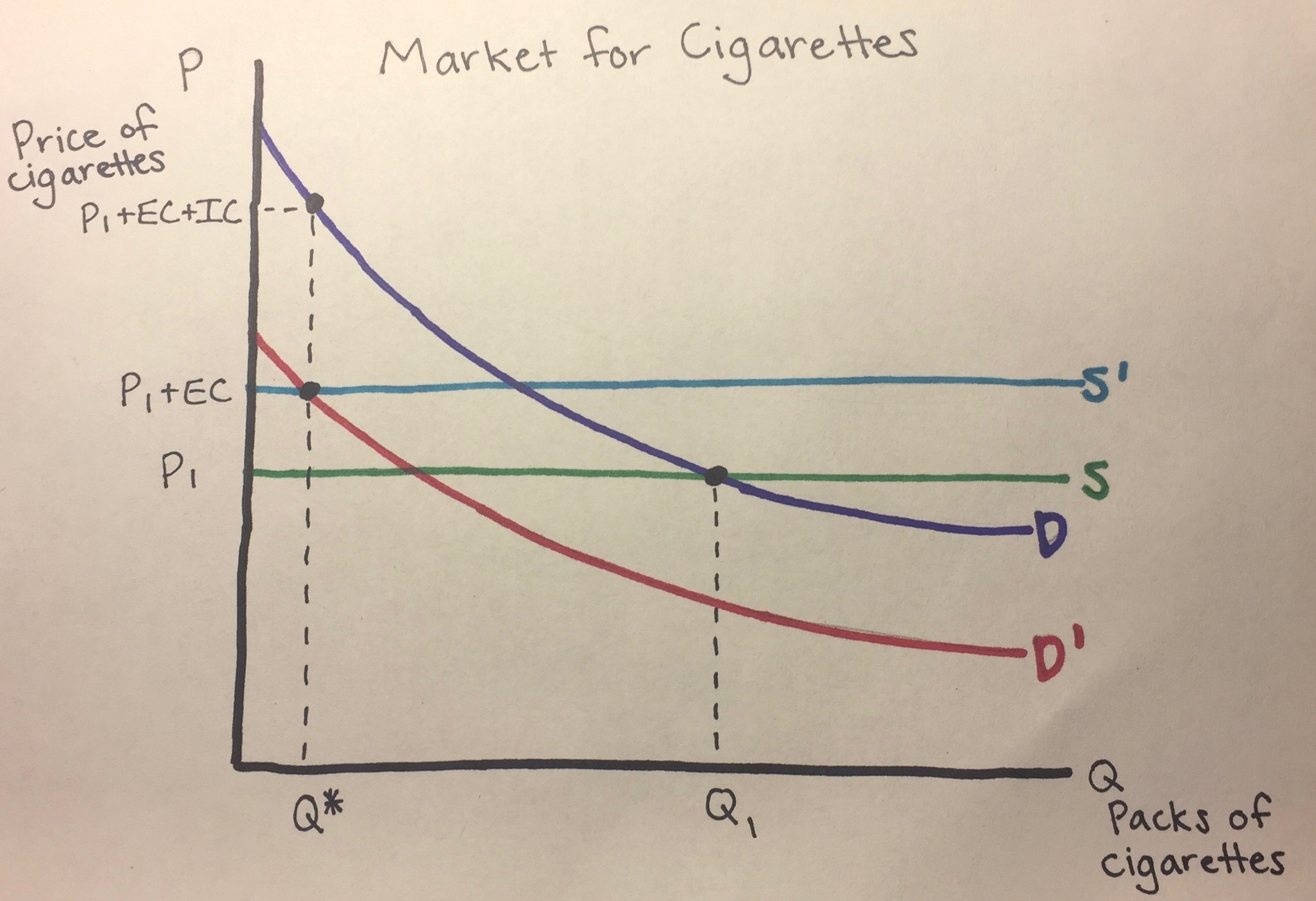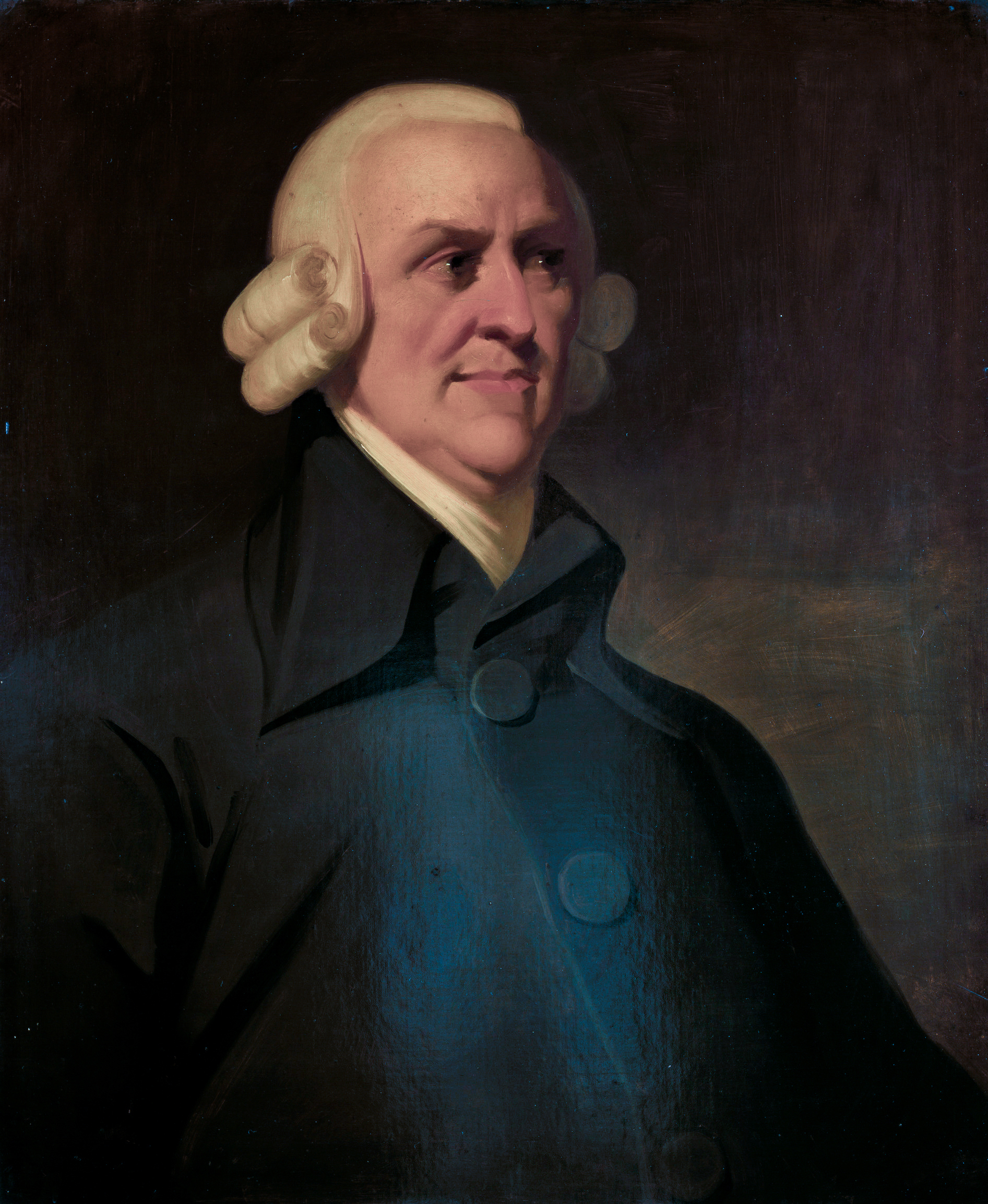|
Internality
An internality is the long-term benefit or cost to an individual that they do not consider when making the decision to consume a good or service. One way this is related to behavioral economics is by means of the concept of hyperbolic discounting, in which immediate consequences of a decision are disproportionately weighed compared to the future consequences. A potential cause is lack of access to full information regarding the associated costs and benefits prior to consumption. This contrasts with traditional economic theory, which makes the assumption that individuals are rational decision makers who take all personal costs into account when paying for goods and services. One example of a positive internality is the long run effect of exercising, if these are not taken into account when deciding whether to exercise. Future benefits that an individual may not take into consideration include a diminished risk of heart disease and higher bone density. A common example of a potential n ... [...More Info...] [...Related Items...] OR: [Wikipedia] [Google] [Baidu] |
Externality
In economics, an externality is an Indirect costs, indirect cost (external cost) or indirect benefit (external benefit) to an uninvolved third party that arises as an effect of another party's (or parties') activity. Externalities can be considered as unpriced components that are involved in either consumer or producer consumption. Air pollution from motor vehicles is one example. The Air pollution#Health effects, cost of air pollution to society is not paid by either the producers or users of motorized transport. Water pollution from mills and factories are another example. All (water) consumers are made worse off by pollution but are not compensated by the market for this damage. The concept of externality was first developed by Alfred Marshall in the 1890s and achieved broader attention in the works of economist Arthur Cecil Pigou, Arthur Pigou in the 1920s. The prototypical example of a negative externality is environmental pollution. Pigou argued that a tax, equal to the m ... [...More Info...] [...Related Items...] OR: [Wikipedia] [Google] [Baidu] |
Behavioral Economics
Behavioral economics is the study of the psychological (e.g. cognitive, behavioral, affective, social) factors involved in the decisions of individuals or institutions, and how these decisions deviate from those implied by traditional economic theory. Behavioral economics is primarily concerned with the bounds of rationality of economic agents. Behavioral models typically integrate insights from psychology, neuroscience and microeconomic theory. Behavioral economics began as a distinct field of study in the 1970s and 1980s, but can be traced back to 18th-century economists, such as Adam Smith, who deliberated how the economic behavior of individuals could be influenced by their desires. The status of behavioral economics as a subfield of economics is a fairly recent development; the breakthroughs that laid the foundation for it were published through the last three decades of the 20th century. Behavioral economics is still growing as a field, being used increasingly in ... [...More Info...] [...Related Items...] OR: [Wikipedia] [Google] [Baidu] |
Hyperbolic Discounting
In economics, hyperbolic discounting is a time inconsistency, time-''inconsistent'' model of delay discounting. It is one of the cornerstones of behavioral economics and its brain-basis is actively being studied by neuroeconomics researchers. According to the discounted utility approach, intertemporal choices are no different from other choices, except that some consequences are delayed and hence must be anticipated and discounted (i.e., reweighted to take into account the delay). Given two similar rewards, humans show a preference for one that arrives in a more prompt timeframe. Humans are said to ''discount'' the value of the later reward, by a factor that increases with the length of the delay. In the financial world, this process is normally modeled in the form of exponential discounting, a time-''consistent'' model of discounting. Many psychological studies have since demonstrated deviations in instinctive preference from the constant discount rate assumed in exponential disc ... [...More Info...] [...Related Items...] OR: [Wikipedia] [Google] [Baidu] |
Price Elasticity Of Demand
A good's price elasticity of demand (E_d, PED) is a measure of how sensitive the quantity demanded is to its price. When the price rises, quantity demanded falls for almost any good ( law of demand), but it falls more for some than for others. The price elasticity gives the percentage change in quantity demanded when there is a one percent increase in price, holding everything else constant. If the elasticity is −2, that means a one percent price rise leads to a two percent decline in quantity demanded. Other elasticities measure how the quantity demanded changes with other variables (e.g. the income elasticity of demand for consumer income changes). Price elasticities are negative except in special cases. If a good is said to have an elasticity of 2, it almost always means that the good has an elasticity of −2 according to the formal definition. The phrase "more elastic" means that a good's elasticity has greater magnitude, ignoring the sign. Veblen and Giffen goods are t ... [...More Info...] [...Related Items...] OR: [Wikipedia] [Google] [Baidu] |
Equity (economics)
Economic equity is the construct, concept or idea of ''fairness'' in economics and ''justice'' in the distribution of wealth, resources, and taxation within a society. Equity is closely tied to taxation policies, welfare economics, and the discussions of public finance, influencing how resources are allocated among different segments of the population. Overview According to Peter Corning, there are three distinct categories of substantive fairness (equality, equity, and reciprocity) that must be combined and balanced in order to achieve a truly fair society. But while most of middle-income countries increased inequality in recent years, it is important to note that middle classes and—to a lesser extent—poorer-income groups seem to be getting an increasing share of income in recent years. To some, this advance is still vulnerable and needs to be quickly accelerated in the 21st century Definitions of equity Equity in economics refers to a condition of fairness where the econo ... [...More Info...] [...Related Items...] OR: [Wikipedia] [Google] [Baidu] |
Regressive Tax
A regressive tax is a tax imposed in such a manner that the tax rate decreases as the amount subject to taxation increases. "Regressive" describes a distribution effect on income or expenditure, referring to the way the rate progresses from high to low, so that the average tax rate exceeds the marginal tax rate.Hyman, David M. (1990) ''Public Finance: A Contemporary Application of Theory to Policy'', 3rd, Dryden Press: Chicago, ILJames, Simon (1998) ''A Dictionary of Taxation'', Edgar Elgar Publishing Limited: Northampton, MA The regressivity of a particular tax can also factor the propensity of the taxpayers to engage in the taxed activity relative to their resources (the demographics of the tax base). In other words, if the activity being taxed is more likely to be carried out by the poor and less likely to be carried out by the rich, the tax may be considered regressive. To measure the effect, the income elasticity of the good being taxed as well as the income effect on cons ... [...More Info...] [...Related Items...] OR: [Wikipedia] [Google] [Baidu] |
Consumer Behaviour
Consumer behaviour is the study of individuals, groups, or organisations and all activities associated with the Purchasing, purchase, Utility, use and disposal of goods and services. It encompasses how the consumer's emotions, Attitude (psychology), attitudes, and Preference (economics), preferences affect Buyer decision process, buying behaviour, and how external cues—such as visual prompts, auditory signals, or tactile (haptic) feedback—can shape those responses. Consumer behaviour emerged in the 1940–1950s as a distinct sub-discipline of marketing, but has become an Interdisciplinarity, interdisciplinary social science that blends elements from psychology, sociology, Social Anthropology, social anthropology, anthropology, ethnography, ethnology, marketing, and economics (especially behavioural economics). The study of consumer behaviour formally investigates individual qualities such as demographics, personality lifestyles, and behavioural variables (like usage rate ... [...More Info...] [...Related Items...] OR: [Wikipedia] [Google] [Baidu] |





